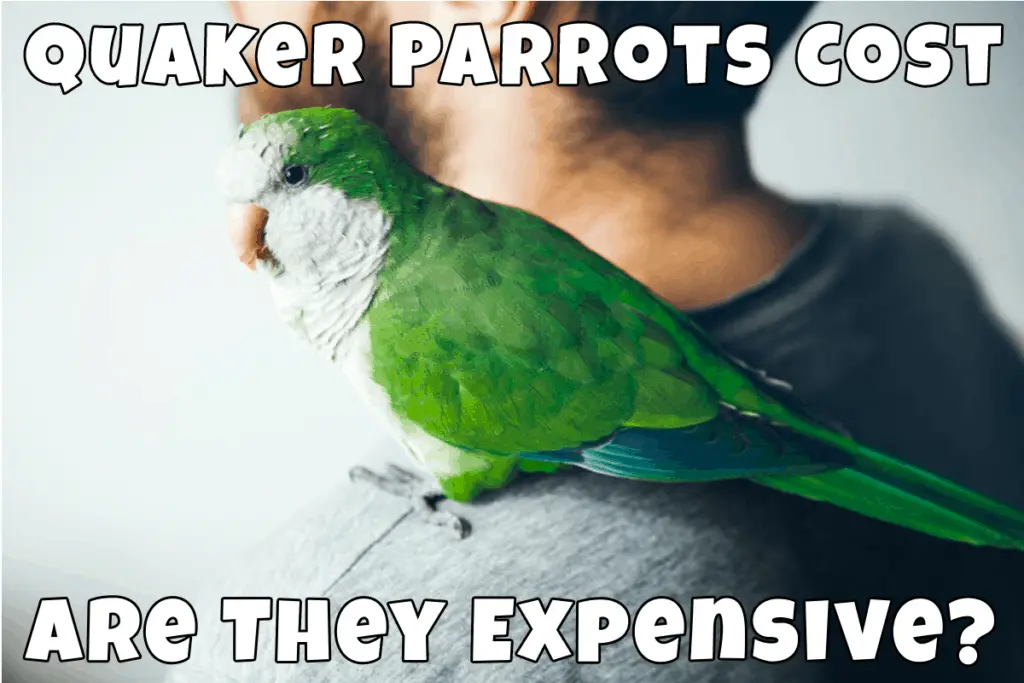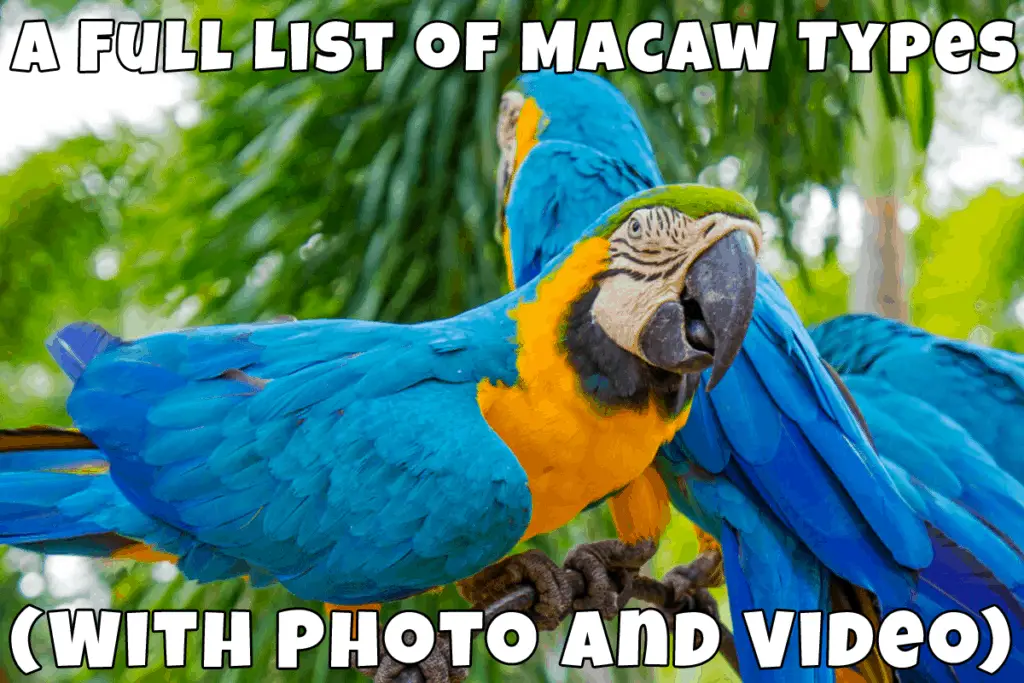The first you need to acquire when buying a parrot is a lovely one that would become the bird’s home. The task seems easy enough but actually requires much time and preparation. If you buy a bird of an average or big size, you’ll need online research before you bring it home, as cages differ in size, design, and price significantly.
There are lots of factors that you need to consider when choosing a cage: size, materials, functionality, styles, sturdiness, price, and so on. Thus, a quick guide on choosing the perfect cage accompanied by a few optimal selections would help any future parrot owner.
Today, I’ll share my experience in buying cages, what should be considered, and where to order a cage online!
How to Choose a Parrot Cage and What to Consider?
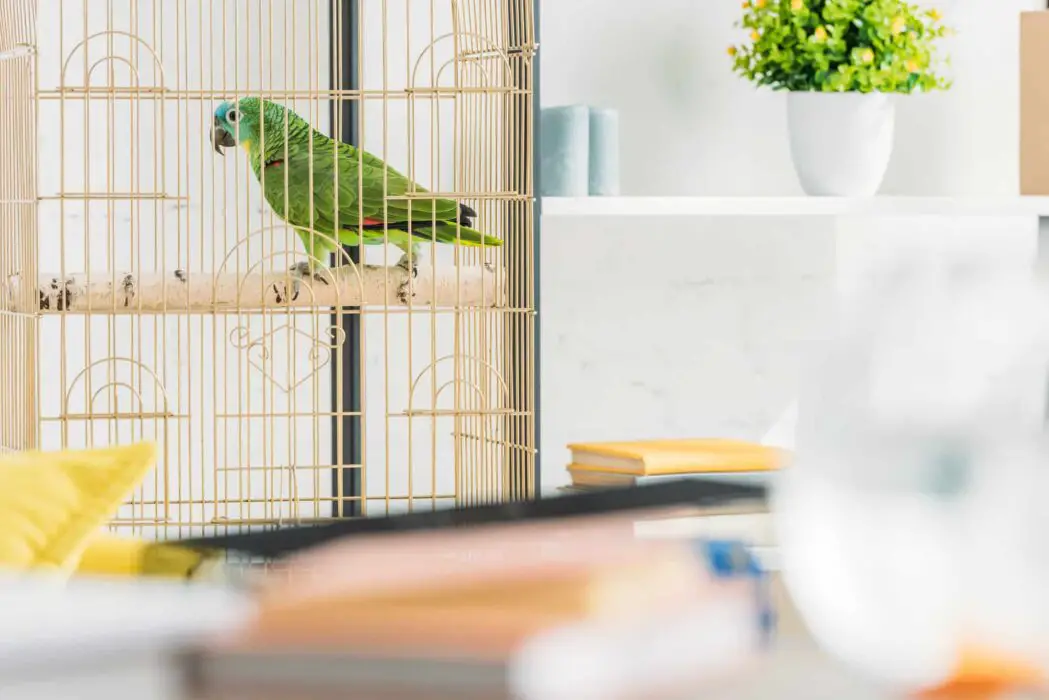
Here are some of the main factors that should be taken into consideration when choosing a cage for your future bird. As an example of suitable cages for mid-sized parrots, you can check my previous article on the Best Cages for African Grey Parrots.
3 Best Cages for African Grey Parrots
Placement
The first thing you need to do is imagine where you’d like to place the cage in your home. From there, you’ll know what type of fixing system you’ll need to look for. For example, big cages are often stand-alone with a wheely tray. Smaller cages can be placed on the floor and furniture, plus there might be stabilized hanging solutions.
When choosing a location, follow these rules:
- Avoid the placement directly near the window. Parrots don’t like direct hot sunlight and cool drafts.
- Move the cage away from noisy places, or your bird will be constantly stressed.
- Place the cage in a “social” area of the room where the bird will see you, but not so close that you’ll be disturbing its rest time late in the evening.
Size
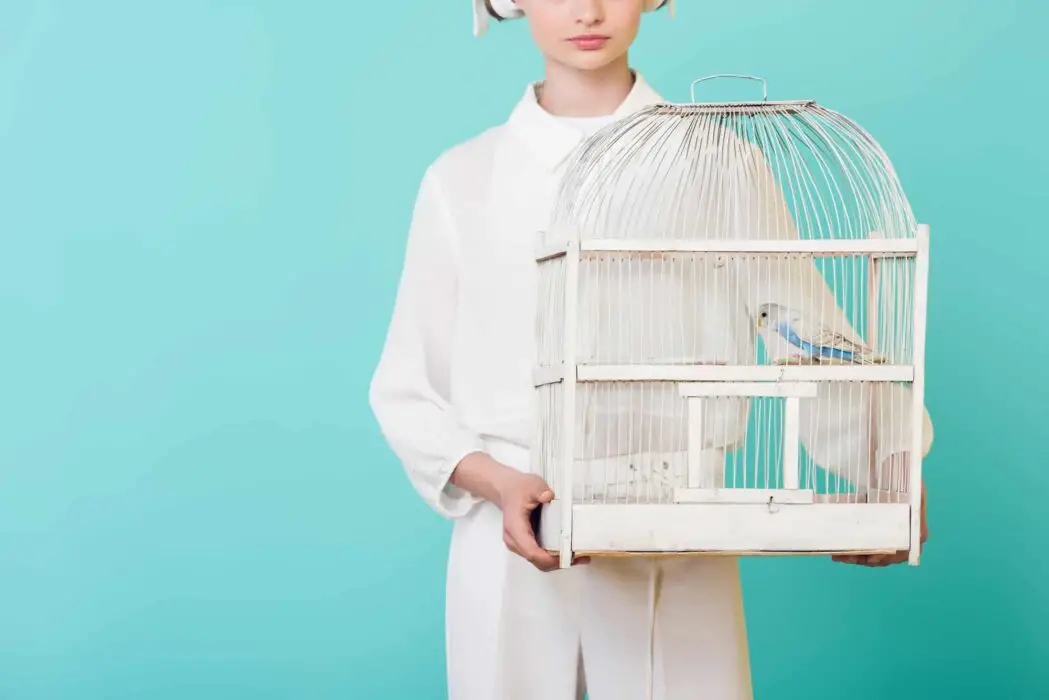
Of course, size does matter! At least for bird cage. Usually, the bigger, the better, but you have to pay attention to bar spacing and ensure that your bird cannot get stuck there or hurt its beak.
Remember that a large bird will not only be uncomfortable in small confinement, but can actually develop serious health issues as a result.
A smaller bird will feel great in the bigger cage as well.
This point reminds me of another important consideration that many novice owners don’t know.
4 Best Parrot Pellets You Need to Try in 2022!
Bar Spacing
As I’ve mentioned, bar spacing should be appropriate to the bird’s size. Gaps that are too large can become the epicenter of all the pet’s trouble. I’ve already made this mistake in my teen years and can attest that a parrot will stick its beak everywhere and seemingly want to hurt it somehow.
Also, I’d like to mention bar thickness here as well. Too thick is only acceptable for tiny parrots. A bird has to have enough thickness to grasp by its claws to climb around the cage.
Style
This is more of a point for you. Style and design are not important for your bird but will make all the difference when you have to look at the cage every day in your beloved home. I’m sure you would like to make sure that the cage is looking just as stylish as the whole decor of the room. And there are nice-looking cages! You just have to allocate a bit more of your budget to a cage for added design.
Vertical bars
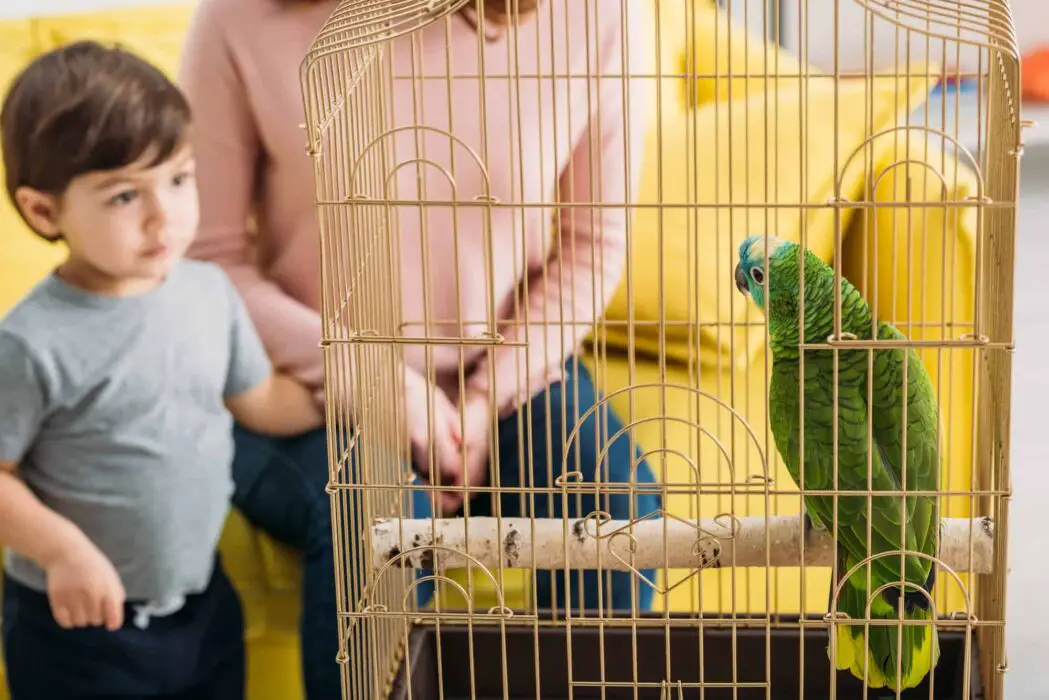
Vertical bars are a great addition to a cage if your parrots prefer climbing instead of flying. However, if you don’t have a pet yet or cannot afford a cage where the birds can freely fly from one end to the other, you should choose a cage with a moderate amount of vertical bars. But not too many and out of place.
But also remember that the birds should have an opportunity to open their wings in the cage and flutter them freely! So if you can’t offer at least this necessity to your future pet, reconsider your decision.
How Long Does Your Parrot Live?
Perches
It may sound to you, but birds don’t sit in the way that’s usual for people. When they are not flying, they are “sitting” or rather standing on a perch.
That’s why it’s so essential to acquire a cage with an accessible disposable perch, as you’ll need several replacements. If the cage comes with a ceramic or plastic perch, dispose of it as soon as possible. Parrots prefer natural materials, even though they are bred in captivity. Buy additional wooden perches, branches, and ropes! Consider the grip size of the parrot type you’d like to buy. Replace the perches as they wore out!
Trays
Cleaning a cage is a routine task, but each time I have to do it, I sigh and think about how I’d like a pet to clean after itself! To make your taste drastically easier, choose a cage with a removable tray. Then, you can fully remove the thing and quickly clean it without dismantling the whole cage.
Do you already know that parrots are messy? You’ll have to clean it regularly. So, the easier the task, the better. For this task, a removable tray is a god-sent.
Of course, you’ll need to clean the whole cage at some point, but it’s not a daily occurrence.
Sturdiness
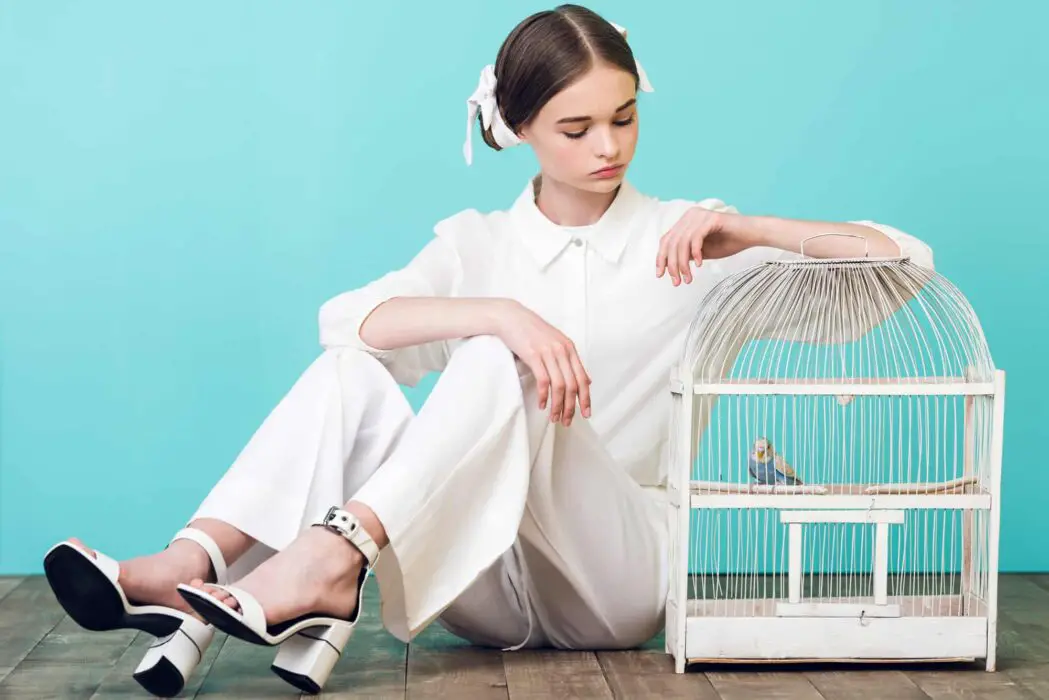
If possible, check all the connections on the size sides and everywhere important for the cage’s sturdiness. Look for something that guarantees utmost protection from your bird’s active play! The cage should be able to withstand all the bird’s jumping, biting, rocking, rattling, shaking, and so on. A calm, sleepy bird can be comfortable in the cheapest cage. An active one needs a sturdy construction – a fair match to the parrot’s strength!
And any bird would switch between the two states.
In addition, you should always pay attention to the quality of materials, even the ones inside the cage. You wouldn’t want the perch to fall down or the bard to be painted with something toxic! Usually, high-end manufacturers offer all the necessary details and certifications about their product’s safety. But you can freely ask the same for on-budget retailers as well. At least ask them to name the materials and Google their safety for pets!
Personally, I know of the two most widespread non-toxic cage materials: powder-coated iron and stainless steel. The former is cheaper but not as durable, and the latter is easier to clean and will serve you longer.
In general, they are both safe and effective for parrot cages.
Wheels
As I’ve mentioned, the bigger standing cages come equipped with wheels. Such cages are usually heavy, and you’ll need to move them around somehow. And here come the wheels to help you. You should make sure that they are high-quality as well. Don’t buy a big heavy cage with thin lippy wheels – it won’t end in your favor! The fixing system should be sturdy as well. It’s also better to choose fixed wheels instead of the 360-rotating as they are not always easy to coordinate on all four legs. However, if it’s the only high-quality choice, don’t stress it – they can still be maneuvered.
Another critical issue to check are the lockers. A locking mechanism is meant to prevent accidental movements of a cage. Therefore, the mechanism should be firm and failure-safe.
Feeding Bowl
A proper feeding bowl is a necessity. And although all cages come equipped with a feeding bowl, immediately throw it away if it’s plastic. This is the worst possible material a manufacturer can choose. Yes, it’s cheap but toxic and dangerous. The material itself was proven to release hormone-like chemicals that lead to an imbalance in a bird’s organism. The consequences are disastrous. Plus, it can’t properly clean it as any scratches will be immediately filled with bacteria that won’t eagerly come off. And beaks do scratch the bowl!
A ceramic bowl is a viable and healthy choice, but not the best.
The optimal material is stainless steel. It’s light, durable, and easy to clean. it doesn’t accumulate dangerous bacteria and releases no toxins.
Always check with the manufacturer the safety of feeding bowls.
Playtops
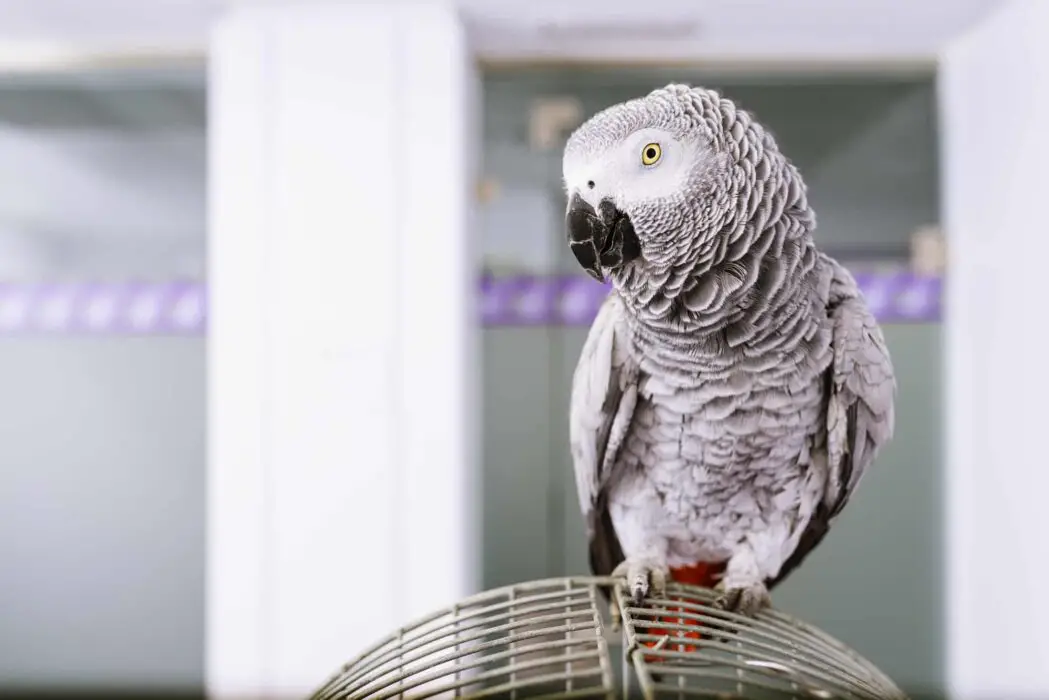
A playtop is not a necessity. Instead, it’s an additional platform on the cage that can serve as a personal space for the parrot when you release it outside. Of course, a bird will find a place in your home even without a playtop, but it can become a luxury addition.
You should take into account your budget and whether you can afford an extra hundred dollars for the complementary space.
I prefer to buy cages with playtops to distinguish a parrot’s space where it would feel comfortable doing its things and to keep my space untouched and safe from scratches from talons and beaks.
A playtop usually comes with a few perches, a feeding bowl, and an additional place where you can put some of the bird’s toys!
Are Parrots Safe for Families With Babies?
What’s the Best Cage for Small Parrots?
Small parrot owners have the most freedom of choice when it comes to cage selection. You don’t need to find anything gigantic, but you can if you want to give your parrot more freedom and space. Just remember to check the bar spacing.
Overall, the market is full of small to average size cages as the majority of pet birds are on a smaller scale.
I’ve chosen this option for smaller birds that offers more freedom:
YAHEETECH 55-inch Rolling Standing Cage
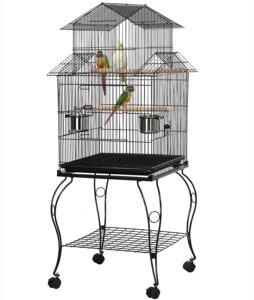
55 inches is more than enough for small parrots and can even fit an average-sized bird as well. There are a couple of variations when it comes to this cage – there is a modification with a triple top that looks stylish and will suit a sophisticated room decor.
Benefits:
- The cage has a stylish triple-roof modification.
- It’s equipped with a removable tray.
- The cage has 4 wheels (360-rotating) with a sturdy locking mechanism.
- It’s made of non-toxic powder-coated iron that is completely safe for the bird.
- The cage has a beginner-friendly instruction and is generally easy to assemble.
- The bar spacing is 0,6”, which is suitable for smaller-sized birds.
Cons:
- Powder-coated iron is cheaper than steel but is not as durable!
- The cage may be too pricey if you’ve planned for a small, budget-friendly bird.
- Takes a lot of space.
Overall, this is a great cage for small and mid-sized parrots that offers enough flying space. However, you may have to consider something cheaper if you are tight on budget.
What’s The Best Cage For Medium Parrots?
The range of a “medium-sized” parrot is, in fact, very diverse. In this category, you can find cockatiels, caiques, lorikeets, parakeets, and even African grey, according to some breeders.
As you see, the sizes vary.
For the smaller birds of the range, the previous cage I’ve recommended can be a great option as well.
A cage for the bigger parrot has to be sturdier to withstand all its active play. However, if you want to boost up the previous option or consider it too small for the bird of your choice, I have another excellent cage for review.
VIVOHOME 53 Inch Wrought Iron Large Bird Cage
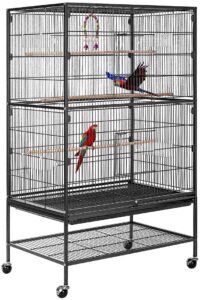
Yes, the description mentions “large parrots,” but I prefer to be on the safer size and spend a bit more on the cage for my bird. After all, it’s not a hamster that will die in a year or two. A parrot is a long-time pet.
This is another manufacturer that makes just as good cages. Its size is 53”, which is more than enough for a mid-sized bird of the bigger scale. An African Grey would be comfortable living in this cage as well. Even most Amazon breeds would find it suitable.
Unfortunately, this cage doesn’t have a playtop. On a positive note – it makes the cage cheaper! Which is an excellent option for budget-friendly owners.
Benefits:
- It has a sturdy frame that is suitable for active parrot play.
- Minimalistic design. The cage will become a balanced part of any room design. It’s universal.
- A removable tray for easy cleaning.
- High-quality materials – the cage is made of low-carbon steel, the best and safest option for parrot cages.
- The cage comes with a variety of accessories.
Cons:
- The provided food boxes are plastic – you’ll need to replace them.
- Requires two people for assembly.
- Some reports of uneven spacing at the assembly points.
If you consider the relatively cheap price tag for this cage, you should have realistic expectations. This is not a luxury cage but a sturdy working one that has its flaws. It’s up to you to decide, though.
A Full List of Lovebird Types (With Photo and Video)
What’s The Best Cage For Large Parrots?
For the giants of the parrot world, mainly Macaws, you’ll have to find a cage of enormous sizes. It’ll always be a stand-alone cage that will take lots of space in the room. But it’s to be expected if you want a gigantic parrot.
Besides, a narrow vertical cage is not always the best option. Here, you should go wide in all directions.
The biggest of the high-quality options I could find is:
YAHEETECH 61/69 inch Playtop Wrought Iron Large Parrot Cage
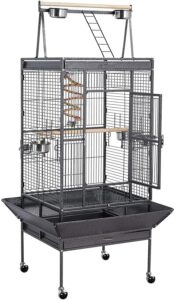
Thus, I offer you yet another cage from the same manufacturer. Its size is 69” (bar spacing is 0,6”)
This cage is not on a cheap scale as it comes with a spacious playtop! But the cage’s overall aesthetics make it look way more expensive than it is.
Benefits:
- A solid metal cage that can be sturdy enough to heavier and more active parrots.
- A spacious cage allows your bird not only to climb around but fly a bit inside as well.
- The material of the cage is coated with non-toxic hammertone paint that is perfectly safe for animals.
- A removable tray is easy to clean.
- 4 wheels (360-rotating) allow easy maneuvering.
- A spacious playtop is equipped with a ladder, two steel feeding bowls, and a natural wide wooden perch.
Cons:
- The wheels are of a unique size; you’ll spend quite some time looking for a replacement if something happens with one.
- Not enough horizontal bars for small parrots to only climb in the cage.
- Assembly will require some time and mastery.
Yes, this cage is not perfect and has a few distinctive cons, but all of them are situational and may not even be a problem for you. Consider all the pros and cons and their merits.

Overall, this is a great cage for the bigger-sized parrots. Any Macaw would fit inside and still have enough space to stretch its wings.
Overall, I believe that these three cages offer enough diversity of choice, both size and price-wise. You can also search for similar options offered by these two brands for more cage variations. You can find offers with or without a playtop or choose the preferred design or different size.

